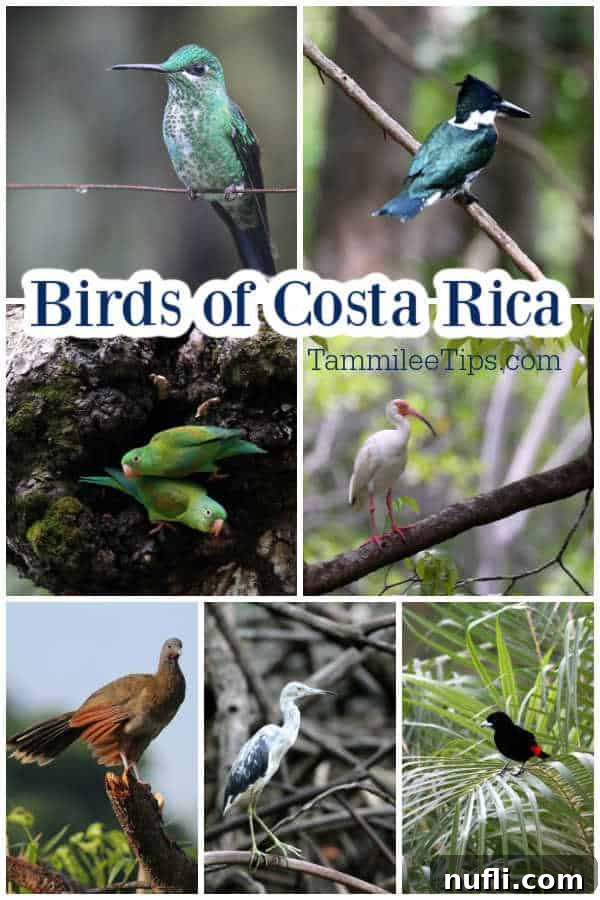Costa Rica, a jewel of Central America, has captured my heart on every visit. With each journey, my appreciation for its unparalleled natural beauty deepens, especially for its vibrant avian residents. This article is a tribute to the breathtaking birds of Costa Rica, a collection of my favorite photographic memories and a guide for fellow birding enthusiasts. I look forward to expanding this post with every future opportunity I have to explore more of this incredible country.
Known for its rich biodiversity and commitment to conservation, Costa Rica offers an astounding variety of landscapes for birdwatching. From the misty heights of the cloud forests to the pristine stretches of its Pacific and Caribbean coastlines, and through lush tropical rainforests and intricate mangrove ecosystems, birding opportunities are endless. Some of my most memorable birding adventures have taken place on a serene boat tour along the Tarcoles River, a fascinating mangrove exploration, within the lively confines of Manuel Antonio National Park, and amidst the tranquil beauty of the Los Angeles Cloud Forest. Each of these unique environments provided incredible chances to spot diverse and often rare species, making every moment an unforgettable experience.
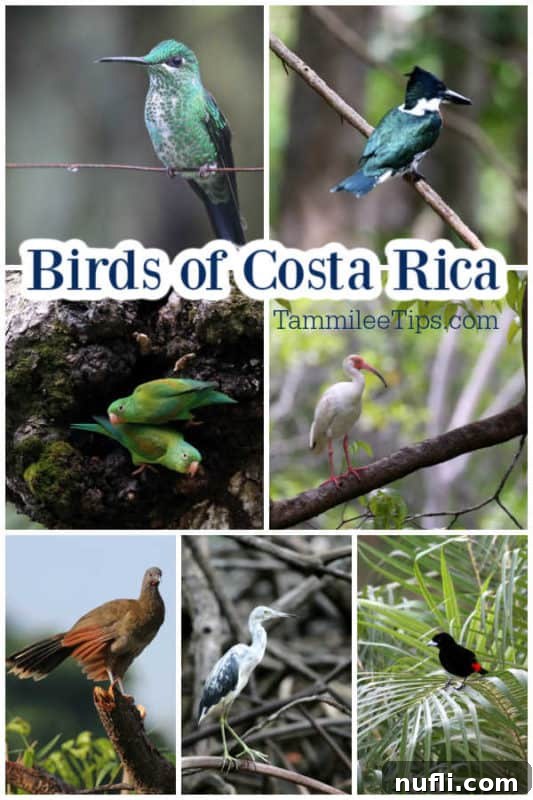
Discovering the Avian Wonders of Costa Rica
Costa Rica is often hailed as a birder’s paradise, and for good reason. With over 900 recorded bird species, a number greater than in the entire United States and Canada combined, this small country packs an extraordinary punch for anyone passionate about feathered creatures. The country’s varied microclimates and protected areas create perfect habitats for both resident and migratory birds. Whether you’re a seasoned ornithologist or a casual nature lover, the sheer diversity and accessibility of birdlife here are astounding.
Essential Resources for Your Costa Rica Birding Adventure
Planning your trip to this incredible birdwatching destination? Here are some top resources to help you:
🏨Find the perfect hotels and vacation rentals
📍Book unforgettable birding and wildlife tours
Birds We’ve Encountered and Photographed
Every bird sighting in Costa Rica feels like a gift. The vibrant colors, unique calls, and fascinating behaviors of these creatures add an unparalleled dimension to the travel experience. Here are some of the magnificent birds I’ve had the pleasure of photographing:
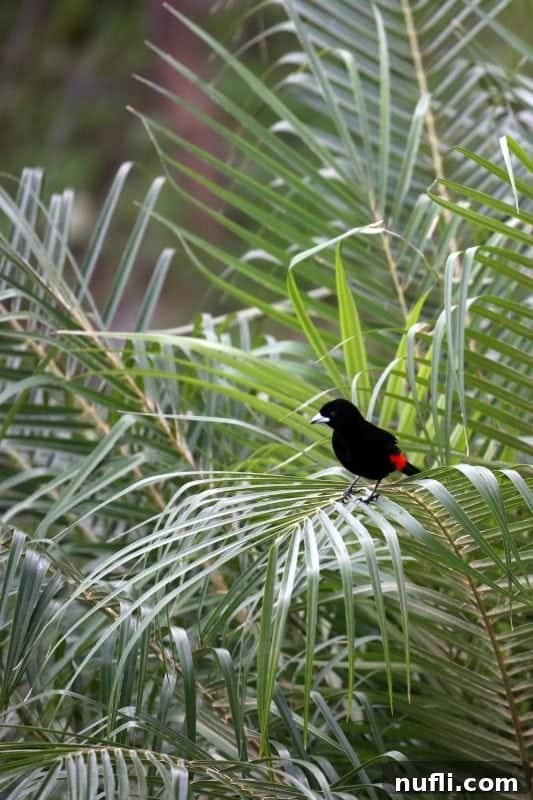
The striking Passerini’s Tanager (also known as the Scarlet-rumped Tanager) is a true gem of the neotropics. This male, with its glossy black plumage contrasted sharply by a brilliant scarlet rump, was spotted near the Pacific Ocean, close to the Si Como No Resort. These tanagers are typically found in the humid lowlands and foothills, often foraging in the canopy or at forest edges, and their vivid colors are always a delight to behold.
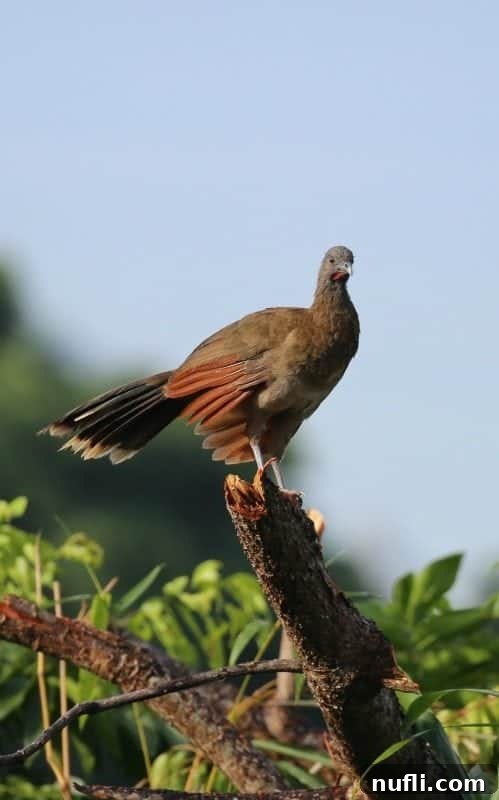
The Grey-headed Chachalaca is a common, yet fascinating, sight in Costa Rica. This particular individual was also seen at the Si Como No Resort. Known for their raucous, communal calls at dawn and dusk, these pheasant-like birds are often found in groups, moving through the undergrowth or low branches of trees. Their distinct vocalizations are an iconic sound of the Costa Rican rainforests, often alerting you to their presence long before you see them.
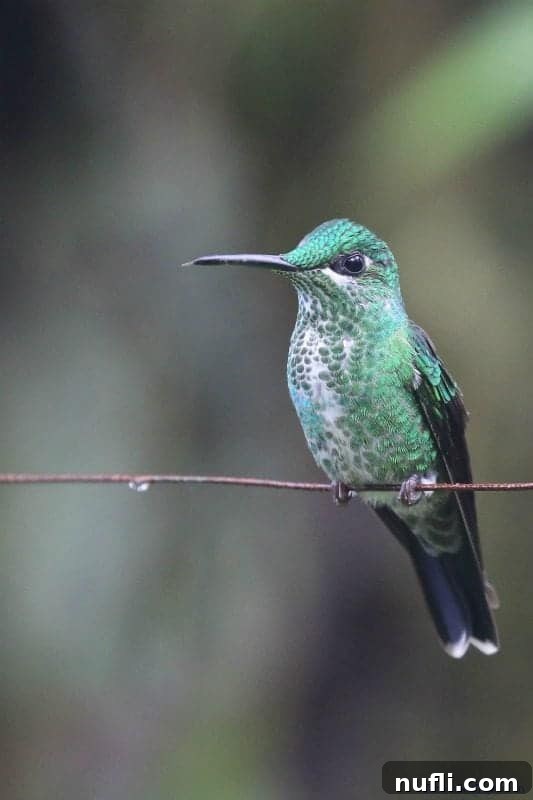
Costa Rica is a haven for hummingbirds, boasting over 50 species. This tiny, emerald-green marvel was seen at the Villa Blanca Resort, nestled within the ethereal Los Angeles Cloud Forest. Hummingbirds are nature’s acrobats, flitting between flowers to sip nectar with their specialized bills. Their iridescent plumage, which shimmers with every turn, is a constant source of wonder, and the cloud forests, rich in flowering plants, are prime locations to observe these miniature marvels.
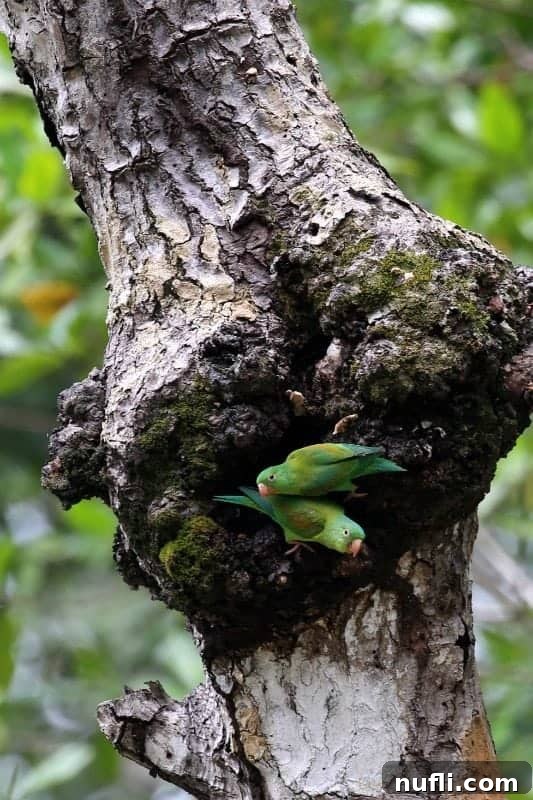
These lively Orange-chinned Parakeets were a highlight during an exhilarating mangrove tour. Often found in noisy flocks, these small, agile parrots are incredibly social and can be seen darting through the trees or roosting together. Their bright green feathers, accented by a subtle orange patch under their beaks, help them blend seamlessly into the dense mangrove foliage, making their discovery even more rewarding.

The beautiful Blue Tanager, with its soft, cerulean plumage, made an unexpected appearance on a random fence post near Manuel Antonio National Park. These adaptable birds are common in a variety of habitats, from gardens to forest edges, and their gentle beauty is always a welcome sight. They are typically seen alone or in pairs, foraging for fruits and insects, and their tranquil presence adds to the charm of the Costa Rican landscape.
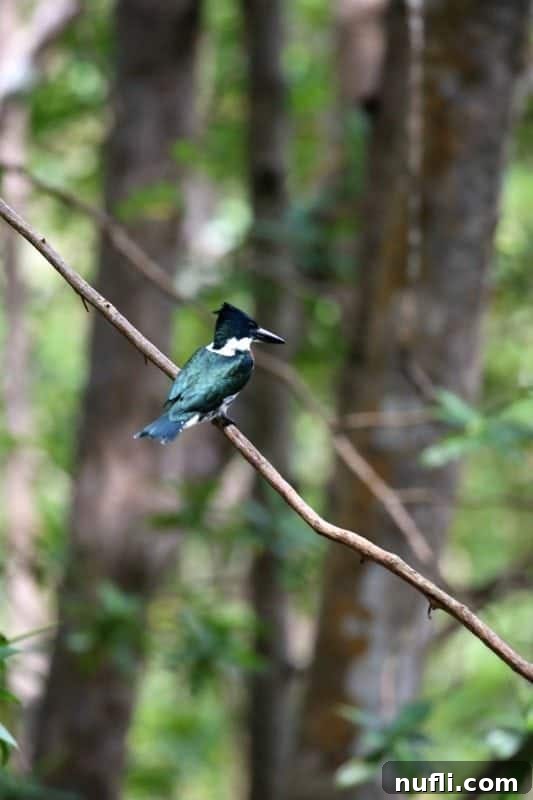
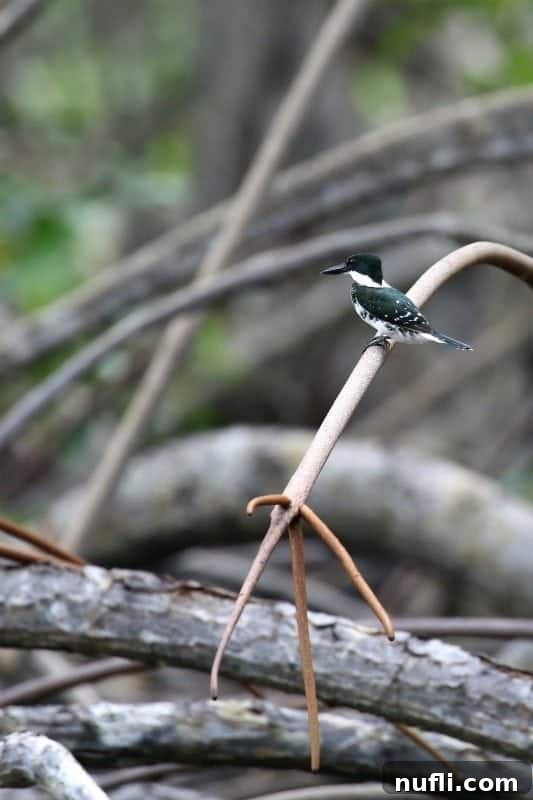
The elusive Green Kingfisher provided a thrilling spectacle during a mangrove tour. Known for their incredible hunting prowess, these small, stocky birds perch patiently on low branches over calm water, then dive with astonishing speed to catch small fish and aquatic insects. Their iridescent green and white plumage provides excellent camouflage against the leafy backdrop, making them a challenge to spot but a joy to observe.
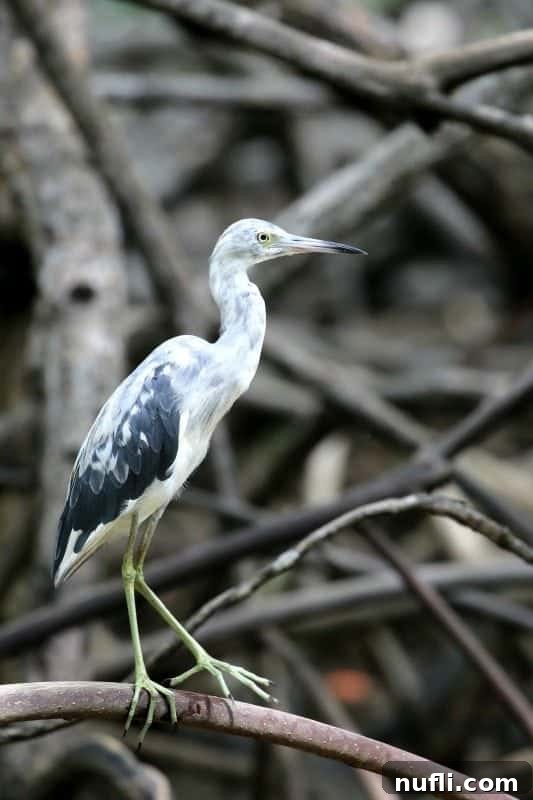
The elegant Little Blue Heron is a common sight in the wetlands and coastal areas of Costa Rica. This individual was observed patiently stalking its prey, showcasing its characteristic dark blue-grey body and greenish legs. These wading birds are a crucial part of the aquatic ecosystem, feeding on fish, frogs, and invertebrates, and their graceful movements make them a favorite among birdwatchers.
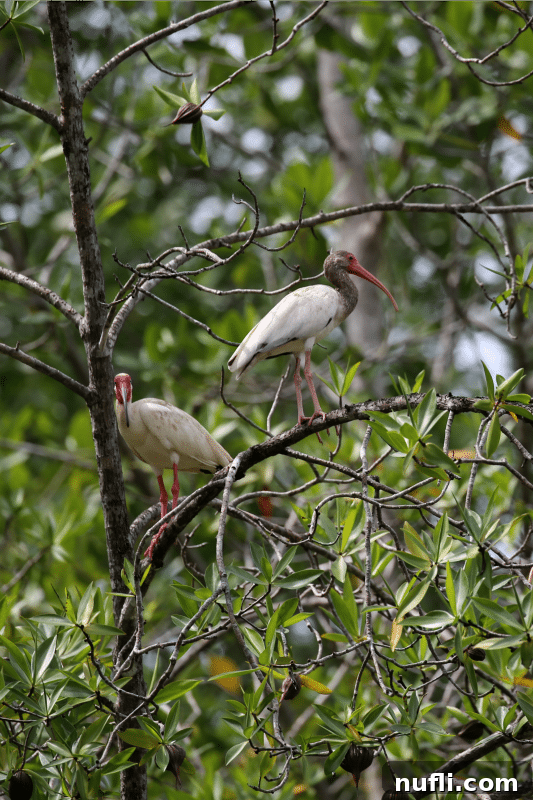
This photograph captures an Immature White Ibis, easily identifiable by its mottled brown and white plumage, which will eventually transition to the pure white of an adult. These youngsters are fascinating to observe as they navigate their surroundings, often mimicking the feeding behaviors of their parents.
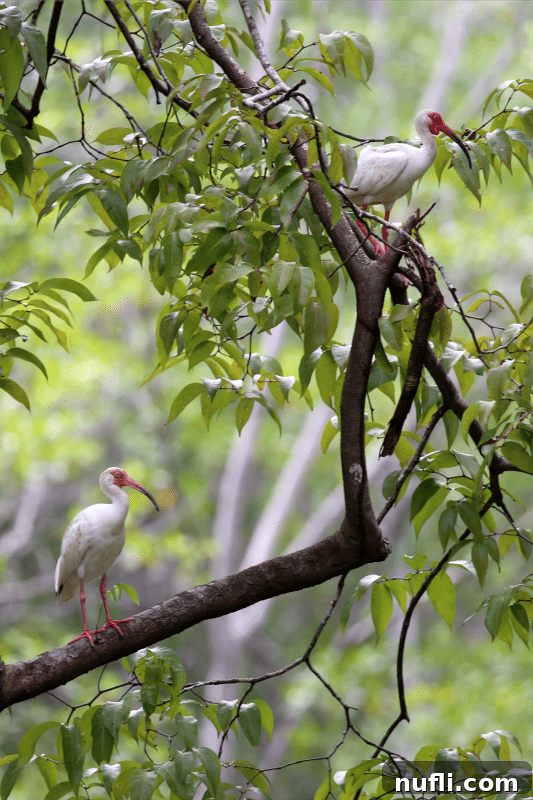
The White Ibis, a stunning wading bird, stands out with its brilliant white feathers and long, downward-curving orange bill. These birds are frequently found in coastal marshes, mudflats, and mangrove swamps, using their specialized bills to probe for crustaceans and small fish. Their communal roosting and feeding habits make them a striking spectacle against the lush green and blue hues of their habitat.
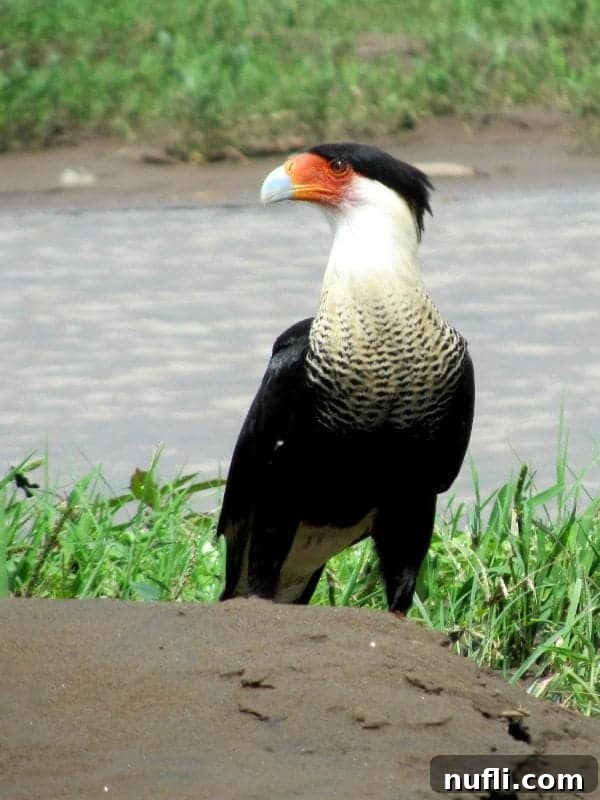
The magnificent Crested Caracara, a unique raptor that often acts more like a terrestrial scavenger, was a prominent sight along the banks of the Tarcoles River. With its striking black crest, white neck, and a blend of black and white plumage, along with a bright orange face, it’s an unmistakable bird. These intelligent birds are often seen walking on the ground, searching for carrion or small prey, distinguishing them from most other falcons.
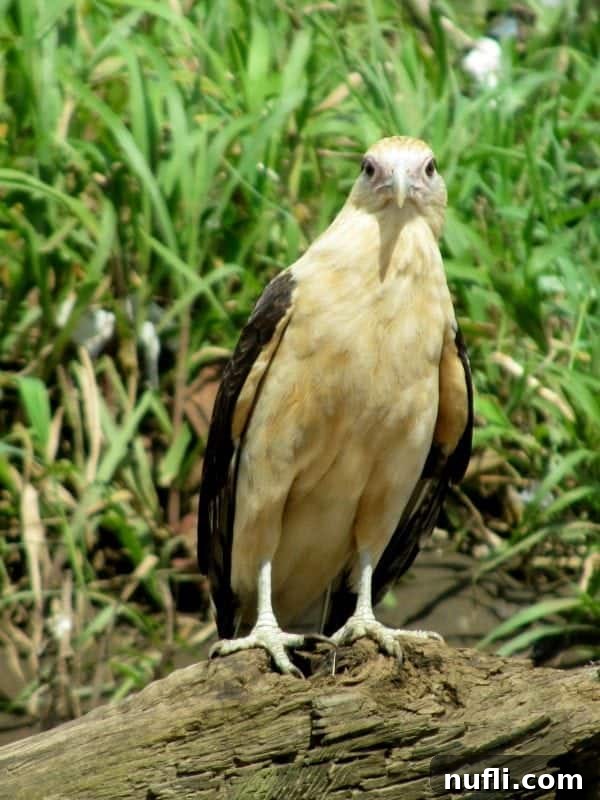
Observing a Juvenile Crested Caracara on the Tarcoles River offered a glimpse into their developmental stages. Young caracaras display a duller, brownish plumage compared to the boldly marked adults, with their facial skin often a paler yellow or greyish pink. Watching them grow and develop their distinctive adult colors is a fascinating aspect of birdwatching.
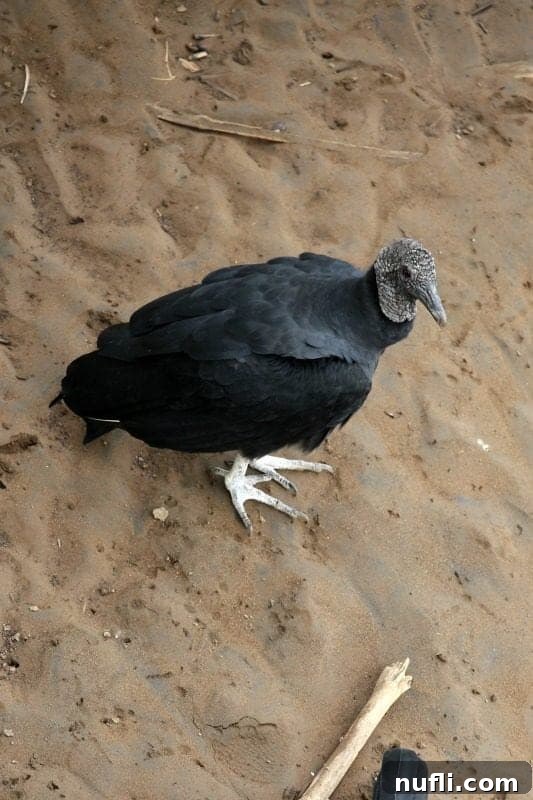
The Black Vulture is an incredibly common and ecologically important bird in Costa Rica, often seen soaring overhead or congregating in groups, especially along rivers like the Tarcoles. With their dark bodies and bald, grey heads, they play a vital role as nature’s clean-up crew, consuming carrion and helping to prevent the spread of disease. While not as flashy as some other species, their presence is a testament to a healthy ecosystem.
Birds Still on My Costa Rican Wishlist
Even after multiple visits, the list of birds I dream of seeing in Costa Rica continues to grow. The sheer avian diversity means there’s always something new and incredible to discover. Top of my list are the majestic Toucans, with their iconic, oversized bills and vibrant plumage. Imagine spotting a Keel-billed Toucan or a Chestnut-mandibled Toucan amidst the rainforest canopy – a truly unforgettable sight!
Another holy grail for birdwatchers is the Resplendent Quetzal, often considered one of the most beautiful birds in the world. Its iridescent green feathers, crimson breast, and exceptionally long tail feathers (in males) make it a breathtaking spectacle, particularly in the cloud forests. I also yearn to spot a Blue-crowned Motmot, with its striking blue crown and distinctive racket-tipped tail, or a vibrant Collared Aracari, another member of the toucan family known for its colorful bill and sociable nature.
Of course, no Costa Rican birding adventure is complete without aspiring to see the Scarlet Macaws. Their brilliant red, yellow, and blue plumage and loud calls are synonymous with the tropical rainforests, and seeing them fly free in their natural habitat is a truly iconic experience. Costa Rica truly is a birder’s paradise, where simply driving down a road can bring you face-to-face with birds you’ve only ever dreamt of. On my last trip, our driver even saw a toucan fly overhead, though I was unfortunately in the back of the van and missed the fleeting glimpse!
Future Adventures and Birding Tips
John and I are already planning our next trip back to Costa Rica, eager to delve deeper into its incredible birdlife and natural wonders. John didn’t get the chance to join me when I visited Manuel Antonio National Park previously, and he’s keen to explore its famous beaches, lush forests, and abundant wildlife, including monkeys, sloths, and, of course, more birds! Given his passion for National Parks, highlighted through his work on Park Ranger John, it feels imperative that he experiences this iconic Costa Rican treasure firsthand.
For those planning their own birdwatching trip, a few tips can enhance your experience: hire a local guide who knows the specific calls and habitats; bring a good pair of binoculars and a field guide; and practice patience – the best sightings often come to those who wait quietly. Early mornings are typically the most active times for birds, so setting an early alarm is highly recommended!
Do you have a favorite spot in Costa Rica for birdwatching, or a particular species you were thrilled to encounter? Please share your recommendations and stories in the comments below! We’re always looking for new places and hidden gems to explore during our next visit to this extraordinary country.
Additional Costa Rica Travel Guides
To help you plan your ultimate Costa Rican adventure, explore our other detailed guides:
Discover the Best Time to Travel to Costa Rica
Explore the enchanting Villa Blanca Cloud Forest Hotel & Nature Reserve
Learn more about the eco-friendly Si Como No Resort
Check out all of our comprehensive Costa Rica Travel Guides for more inspiration and planning resources!
